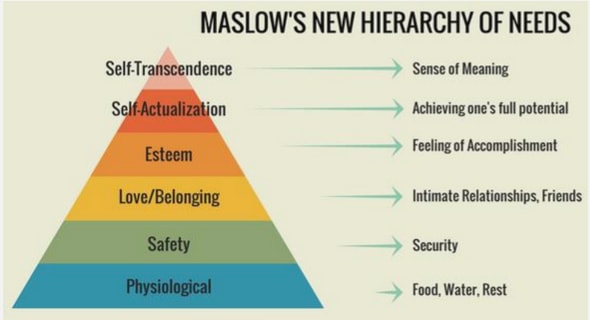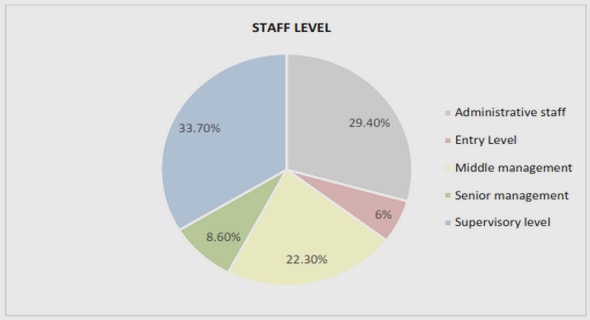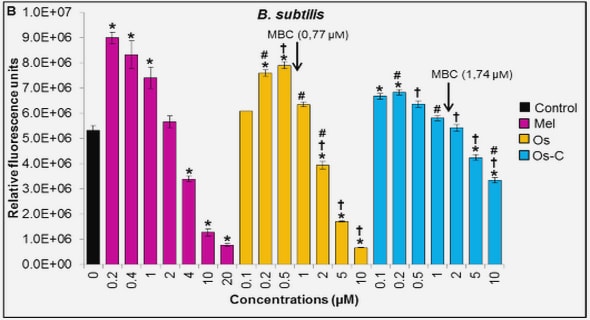Get Complete Project Material File(s) Now! »
Automobile Sector & Its Growth in India
Automotive industry is one of the key drivers for an economy. It plays a pivotal role in country’s rapid economic and industrial development. In India, the period after independence until the 1970s was a period of pervasive regulation and protection for the automotive sector as well (Kathuria 1996; Singh 2007). Until the 1980s, the automobile industry in India was in line with the overall policy of state intervention in the economy. Moreover, the number of firms in various segments of this industry like light commercial vehicles [LCV] and medium and heavy commercial vehicles [HCV], until the early 1980’s, were remarkably few. Indian automobile industry has been operating under protected market conditions, which is secured both from internal and external competition for a long period. The limited liberalization of industrial licensing, inward-FDI and technology import are the factors paving way for internal competition in this sector.
Changing in the government policy towards foreign direct investments led to a significant change in the aspects of technological up gradation of Indian automobile industry with the new entrants. Technological expertise and acquisition was expected to enable and adopt industries to modernize, which helps to improve and increase their competitive capabilities.
There were tremendous improvements in Indian automobile market from the past two decades. Many global market players like Toyota, General Motors, Suzuki, Nissan, Chevrolet, Hyundai, Volvo and Ford Motor Company entered India with different kinds of marketing strategies to establish in the Indian market.
Recently, with the reduction of excise taxes and de-licensing has led the Indian automobile industry into a reformed condition. Indian automobile industry is well positioned for growth, serving both domestic demand and, increasingly, export opportunities. Furthermore, the increase in the income levels and India’s working-age population is likely to help the increasing market for private vehicles.
Significance of the Study
Many corporations in these days are entering into the different foreign markets with the base of proper communication and infrastructure facilities provided by governments. Usunier (1993) stated that in today’s globalized world, barriers to trade and international exchanges are constantly diminishing. A proper fundamental market analysis and pre-market study will help the international marketers in formulating the effective marketing strategies. Without proper idea about market conditions and culture, it is difficult for any corporation to well establish, survive and compete in the market. However, the dimension of culture remains the most enduring feature that is necessary to be integrated in marketing strategies in their implementation, especially when they focus on international marketing mix. The major goal of any MNC is to create enormous profits by penetrating into different markets. Corporations need to adapt effective combination of the marketing mix to create profits and run the business in successful manner especially in automobile market.
For adaptation of the marketing mix, a company needs best sales practices and policies, planning strategies and perfect framework. To evaluate and analyze the various controllable variables need to be adapted in the marketing mix according to local culture, in this study we tried to find out various facts and theories related to the controllable variables in the marketing mix needed to adapt in relation to local culture. This research study will be primarily beneficial for automobile corporations, as they can find out the factors for adaptation in the marketing mix across culture and try to find out the appropriate solutions with the base from the theoretical framework of this research study. Likewise, findings of this study can be taken as references while evaluating the corporations, which are doing international marketing across different cultures. In addition, from this study, students as well as managers can understand the cultural differences and their influence on a company’s marketing activities and this study also helps to know what is the action to be taken under various marketing conditions in accordance to local cultural context.
Limitations of the Study
Our research study possesses several limitations due to time constraint and economic costs. In this research part of study after detailed analysis of the single case, we had drawn our conclusion. We believe that considering the multiple case studies might be the better option and choice, which helps to find out complete overview of the cultural differences and knowing when companies need to adapt the controllable variables in their marketing mix according to different cultures. We employed qualitative study to carry out this research work, since we have chosen a single company. Therefore, quantitative study method can be deployed in future research to perform comparison with similar organizations to find out whether similar findings are noticed.
Marketing Entry Concepts
The differences in the international orientation and approach to international markets that guide the international business activities of companies can be described by one of the three orientations to international marketing management. According to Cateora (1996) the concepts are… Domestic Market Extension Concept: When a domestic company wants to extend its domestic products into foreign markets, it is oriented under this concept. It views the domestic operations as primary and international operations as secondary. The primary motive beyond this is to dispose of excessive domestic production. Here, the company seeks those kinds of foreign markets where demand is similar to home market and its domestic products will be acceptable and this extension strategy can be highly profitable. Exporting companies irrespective of size are approaching international marketing from this perspective. Firms adopting this marketing approach are classified as ethnocentric in the EPRG schema.
Multi-domestic Market Concept: A company that has a strong sense that country markets are vastly different (depending on the product and consumption) is driven by this multi-domestic market concept. Once a company identifies the importance of oversees market differences and the importance of offshore business to the organization, its international business is oriented by a shift to a multi-domestic marketing strategy. Firms operating with this market concept adapt various kinds of marketing strategies on a country-by-country basis with separate marketing strategies for each country. Here, the company aims for adaptation to local country markets and follows the unique international strategies that suit each market, which requires local marketing input and control. Firms adopting this marketing approach are classified in the EPRG schema as polycentric. Global Marketing Concept: A company guided by this orientation is referred as a global company, its marketing activity is a global marketing and its market coverage is total world. Developing a standardized product of dependable quality which provides efficiencies of scale and which to be sold at a reasonable price to a global market i.e. the same country market set through out the world is the activity mainly characterized by the company under global marketing concept. The firm identifies the world as a whole/intact and develops a global marketing strategy that strives for standardization wherever it is cost and culturally effective. The global marketing company would fit in the region-centric or geo-centric classifications of the EPRG schema.
Special Problems in International Marketing
In fact, there is no basic difference between international marketing and domestic marketing, since the principles of marketing are universal, but they differ in respect of some specific problems or features. International marketing strategy differs from domestic marketing strategy with the differences in a marketing environment. According to Francis Cherunilam (2010) the important problems in the international marketing are:
• Political and Legal Differences: Political and legal framework for foreign markets is different from that of domestic. The complexity generally increases as the number of countries increases in which a company does business. Political and legal environment differs from country to country and province to province. This is one of the challenges for international marketing activities.
• Cultural Differences: Cultural difference is one of the most difficult problems in the international marketing. Many domestic markets are not free from cultural diversity. People are having different cultural backgrounds. The perceptions, values and norms of people will change from culture to culture.
• Economic Differences: The differences in the economic status of the country and people will influence the marketing process. There are vast differences in economic status between developing country and developed country. Thus, a marketer has to carefully examine the economy status before entering into a new market.
• Currency Unit Differences: Currency unit vary from nation to the nation, which causes the problems of currency convertibility also the problems of exchange rate fluctuations.
• Differences in Language: Language is one of the major challenges for an international marketer, which plays a vital role in communication and promotional activities. Either adaptation of universal language like English or adaptation of activities to the respective local language of the country will be helpful for the company to establish.
Concept of Marketing Strategy
The uniqueness of international marketing comes from the range of unfamiliar circumstances existed in the business and external environment and the variety of strategies are necessary to cope with different levels of uncertainty encountered in the foreign markets (Cateora & Graham 2007:9). Success will be achieved by those organizations that understand their environment and learn to influence its outcomes (Chee & Harris 1993:22).
McCarthy & Perreault (1984) defined marketing strategy as a “big picture” of what a firm will do in some market, made up of two inter-related parts – the marketing mix and targeted market. Hence, marketing mix and targeted market are the components of marketing strategy. Formulation and implementation of marketing programs is dealt by marketing management to support the perspectives of strategic marketing, referring to marketing strategy of a product/ market. Thus, a marketing strategy is developed and formulated at business unit level. Marketing strategy in a given environment, deals essentially with the interplay of three forces known as strategic three C’s: Corporation, customer and competition.
Marketing strategies focus on the ways in which a corporation can differentiate itself effectively from its competitors, capitalizing on its distinctive strengths to deliver better value to its customers. A proper marketing strategy is characterized by a clear market definition, a good match between corporate strengths and needs of the market and superior performance, relative to the competition, in the key success factors of the business.
Marketing strategy with the base of three constituents customer, corporation and competition and must be defined as an endeavor by a corporation to differentiate itself positively from its competitors, using its relative corporate strengths to better satisfy customer needs in a given environmental setting. Based on the interplay of strategic 3 C’s, formation of marketing strategy requires the following three decision.
1. Where to compete: that is, it requires a definition of the market (For example competing across a market entirely or in one or more market segments).
2. How to compete: that is, it requires a means for competing (for example, introducing a new product to meet a customer need or establishing a new position for an existing product).
3. When to compete: that is, it requires a timing of market entry (for example, being first in the market or waiting until primary demand is established).
Culture and International Business
When comes to business perspective, organizations and corporations, which are operating internationally and managing in different markets, should need to consider the culture of the people. Further, adjusting their operations to manage those cultural differences in designing the marketing mix will lead to smooth running and success of the business. Since, individuals are highly influenced by the culture, which they belongs to, the company has to frame a marketing strategy and marketing mix that is suitable to attract local culture. According to past research, national culture has considerable influence on consumer behavior (Jaishankar 1998). National culture of any country, as outer stimuli, influence on the diffusion of products across countries (Kumar et al. 1998). With the rapid globalization, culture becomes predominantly key strategic issue in the market and for organizations that have to be faced and properly managed.
People of each country possess a distinct “national character” (Clark 1990). Thus, organizations need to adapt different strategies for different countries to manage in different cultures, since the individual nature and behavior differs according to culture of that particular country. International marketing is highly influenced by the three components of culture, namely beliefs, values and customs (Usunier 1993). These three components affect the buying behavior and psychology of the individual.
• A belief means a large number of mental and verbal processes that reflect our knowledge and assessment of products and services (Usunier 1993).
• Values are the indicators that consumers use to serve as guides for what is appropriate for behavior of individuals. They tend to be relatively enduring and stable over time and widely accepted by members of a particular market (Usunier 1993). Busch and Houston (1985) proposed that values are enduring beliefs that guide individual behavior in specific circumstances.
• Customs are the modes of individual’s behavior, which constitute culturally approved or acceptable ways of behaving in specific situations. Customs are evident at key events in one’s life like birth, marriage, death, and at key events in the year like Christmas or Easter (Usunier 1993).
Table of contents :
1. Introduction
1.1 Background of study
1.2 India and its culture
1.2.1 Indian economy and liberalization
1.2.2 Automobile sector and its growth in India
1.3 Purpose of study
1.4 Research question
1.5 Significance of the study
1.6 Limitations
1.7 Structure of the Thesis
2. Theoretical Framework
2.1 International marketing
2.2 Marketing entry concepts
2.2.1 Special problems in international marketing
2.2.2 Motives for international marketing
2.3 Concept of marketing strategy
2.3.1 Key elements of marketing strategy formation
2.4 Concept of marketing mix
2.5 Continuum of adaptation
2.6 Culture and its concept
2.6.1 Culture in brief
2.6.2 Culture defined
2.6.3 Culture and international business
2.6.4 Elements and characteristics of culture
2.6.4.1 Eight characteristics of culture
2.7 Cultural differences
2.8 Cultural dimension models
2.8.1 Hofstede’s model
2.8.2 Trompeenars model
2.9 Halls high/ low context approach
2.10 Cultural influence on marketing mix
2.10.1 Impact of cultural differences on marketing mix
2.11 Conclusion of theoretical framework
3. Research Methodology
3.1 Introduction
3.2 Research strategy
3.3 Research design
3.4 Case selection
3.5 Data collection
3.5.1 Data collection of secondary materials
3.5.2 Empirical data collection
3.5.3 Interviewees
3.6 Quality criteria
3.6.1 Reliability
3.6.2 Validity
3.7 Ethical consideration
4. Empirical findings
4.1 Introduction
4.2 Company background
4.3 Corporate logo
4.4 Corporate vision and values
4.4.1 Values
4.5 Volvo in India
4.5.1 Corporate values of company
4.6 Volvo and Indian culture
4.7 Marketing strategy of Volvo cars in India
4.8 Volvo adaptation to local culture
4.8.1 Volvo products in Indian market
4.8.2 Volvo pricing in Indian market
4.8.3 Volvo distribution in Indian market
4.8.4 Volvo promotion in Indian market
4.8.5 Volvo branding in Indian market
4.8.6 Volvo personal selling process
4.8.7 Volvo after sales service
4.9 Overall comments
5. Analysis
5.1 Cultural influences on Volvo car company in India
5.2 Adaptation of controllable factors with respect to culture
5.2.1 Adaptation of product
5.2.2 Adaptation of price
5.2.3 Adaptation of distribution channels
5.2.4 Adaptation of promotion
5.2.5 Adaptation of brand
5.2.6 Adaptation of personal selling
5.2.7 Adaptation of service
5.3 Influence of culture on controllable variables
6. Final discussions and recommendations
6.1 Final discussion
6.2 Conclusion
6.3 Recommendations
6.4 Future investigation
References


